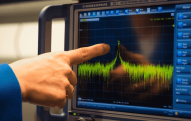Worms, Neurons, and What Scientists are Learning about Behavior Variability
The human body has a mind-boggling amount of neurons.
Nearly 100 billion neurons fire messages across almost 100 trillion synapses.
It's an enormous network.
The communications zipping through the nervous system affect how a person reacts to a situation--and his or her behavior will change based on what's going on.
Figuring out how, when, and where nuances in behavior comes into play poses an interesting puzzle, especially for scientists who traditionally prefer results where A leads to B.
"We often think of variability in a task as a disadvantage," says Andrew Gordus, research associate at the Lulu and Anthony Wang Laboratory of Neural Circuits and Behavior at The Rockefeller University, "but it allows us to explore different ways of interacting with the world."
Forays into this research area require a different approach.
Normally someone studying neurons would assign "definite functionality", saying neurons will always act a certain way in response to a certain stimulus.
But this tends to hide any divergences in how the neurons react that could be worth exploring.
A team of researchers, led by Professor Cornelia Bargmann at the Rockefeller University, decided to take a closer look at the dynamics between neurons.
Their results, published in Cell, reveal an intricate interplay between neurons that defines behavioral responses in an animal much less complicated than humans: the worm.
The worm has the same types of neurons that humans do, but its nervous system contains a fraction of the neurons and connections.
A single person, remember, has 100 billion neurons.
That's nearly as many neurons as there are galaxies in the unfathomably large universe.
The worm only has 302 neurons with 6,000 connections.
Scientists actually mapped out the structural anatomy of the worm's nervous system more than three decades ago.
But while the territory no longer remains terra incognita for scientists, the worm's nervous system still holds some surprises.
"[T]he static structure of the nervous system does not tell us much about the dynamics of the system," explains Gordus. "How the system behaves depends on the texture of the connections, how strong they are, and whether they are excitatory or inhibitory."
The Cell study actually began as a side project for Gordus. He was studying how one of the worm's specific neurons called AIB responds to odor stimuli.
Expecting consistent responses, he was surprised to discover "noise" in the system.
After struggling to get clean results, he realized maybe he wasn't doing anything wrong. Maybe the neuron had a more nuanced, "noisy" response than previously realized.
Here's what was going on. When a worm detects an attractive odor, it moves towards it. If it loses track of the odor, it backs up to try to reorient and find it again.
The worm will move forward fairly consistently, but whether it backs up or not relies on the states of its neurons.
Worms (and humans) have three types of neurons.
Sensory neurons typically take in information about an environment.
Motor neurons don't have sensors; they send messages out to muscle cells to get things moving.
The third type, interneurons, works as messengers to other neurons. They are extremely diverse. Some researchers estimate there are hundreds of types of interneurons.
The AIB neuron Gordus was studying falls under the interneuron category, but it works with three other major neurons to determine if the worm should reverse in response to an odor "reading".
The sensory neuron that's in charge of gathering the odor information talks directly to the motor neuron responsible for getting muscles moving for a reversal.
Only there's a bit of a game of telephone going on at the same time; two interneurons also chatter to the motor neuron.
All that "noise" Gordus found reflected this complicated wiring diagram.
The team discovered eight possible network states, depending on whether the interneurons and motor neuron were "on" or "off."
Only a few network states would result in the worm moving backward.
Moving forward, Gordus wants to figure out what causes these differences in the first place and how different neurons affect behavior changes in specific conditions.
"[W]e marvel at how precise a computer can behave when compared to a human," says Gordus. "We are messy and we make mistakes, but that apparent weakness is really a strength for us and all animals. ... We have evolved to be unique and variable because the world we live in is constantly changing, and we need to change with it to survive."
Â
(Image Courtesy: Andrew Gordus)



































